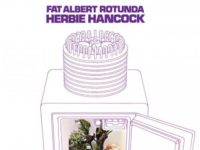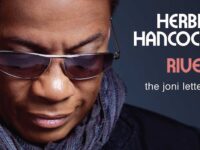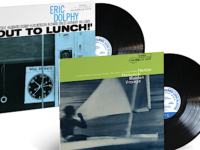Recently, we’ve said goodbye to some jazz greats — including drummer Paul Motian, musician and street poet Gil-Scott Heron, violinist Billy Bang, drummer Joe Morello, and saxophonist James Moody, among others. So, how about switching gears to focus on the best beginnings?
We’ll start with five of what I’d consider some of the finest debut albums in jazz. Now, this isn’t a definitive list — even in my book, I very well may crank out a “Part 2” later on, as I’ve since thought of more even while I wrote this. But to get the discussion going, here are the first five that came from the top of my head, in chronological order of original release:
HERBIE HANCOCK – TAKIN’ OFF (1962): Of the artists spotlighted in this list, none has had a longer and more varied career than Herbie Hancock. He’s gone from progressive bop to space fusion to jazz-funk to hip-hop to standards and goes back to straight-ahead jazz whenever the mood strikes him. Heck, in 2005, his Possibilities project paired him with a different vocalist on each track. Forty-five years as a leader and he was still trying out new formats.
But his first release, out when JFK was president, was a very fine artifact of vintage Blue Note hard bop. Preceding his long stint with Miles Davis by a couple of years, Herbie was already fully formed as a funky but cerebral jazz pianist with a classical background, and as a composer. While the lead-off tune “Watermelon Man” has found its way into many a copybook, the rest of the originals are likewise versatile, interesting and catchy. The horn section was none other than Dexter Gordon and Freddie Hubbard, two legends at their peaks. Hancock made better records after this one, but frankly, none are more enjoyable to listen to.
JOE HENDERSON – PAGE ONE (1963): Speaking of Blue Note, it was only one year later when the record label unveiled another young talent to the jazz world — and, like Hancock, entered the scene with a unique, fully developed technique.
Tenor saxophonist Joe Henderson was never known as a major composer like Herbie, but “Recorda Me” was a worthy addition to the jazz canon and Kenny Dorham’s monster tune “Blue Bossa” bows here as well. The strong set of songs are amply supported by Henderson’s trademark inside-outside style and bolstered by notable sidemen like Dorham and McCoy Tyner; Page One was a can’t-lose proposition that still remains Joe’s best out of a widely renowned discography.
BOBBY HUTCHERSON – DIALOGUE (1965): This debut has the distinction of being linked to another jazz great’s swan song. A year earlier, Bobby Hutcherson contributed his vibraphone to Eric Dolphy’s famous whack jazz masterpiece Out To Lunch. During his time with Dolphy, Hutcherson learned from his mentor to approach music with an open mind and not let conventions restrict his ability to express himself musically. He applied these principles the first chance he got to record as a leader.
Dialogue was impressive first statement, especially coming from an instrument not previously associated with such progressive sounding jazz. If this had come from a saxophonist, it might have been put in the same company as some of Coltrane’s groundbreaking sixties albums. Hutcherson didn’t write any music for his debut; he left that chore in the very capable hands of Andrew Hill and Joe Chambers.
Nevertheless, he changed people’s perception of the vibraphone and proved to be an improviser and leader of the highest order. And he proved it the first time out.
DAVE HOLLAND – CONFERENCE OF THE BIRDS (1973): Another Davis sideman, except that this British double-bassist waited until after his stint with the master before recording as a leader. What he began his career with as a leader had a lot more in common with Ornette than Miles, however, as Conference Of The Birds is very harmolodically inclined.
Holland dispensed with chordal instruments and made his two star sax players Anthony Braxton and Sam Rivers play with, around and against each other, which they do so brilliantly on “Four Winds.” Holland’s astonishing finger speed is on display in the unhinged “Interception.” And there in the center of the proceedings is the lovely, waltzing (but not a waltz) title song, providing an oasis of tranquility amidst the controlled chaos of the rest of the album.
Conference Of The Birds gave the fledgling ECM label a lot of cred among fans of challenging, unconventional jazz. It also helped to establish Holland as one of the most creative acoustic bass players to lead a band, a distinction he enjoys to this day.
WYNTON MARSALIS – WYNTON MARSALIS (1981): Just when straight-up jazz was at its absolute nadir, with many declaring the genre dead, a 19-year-old trumpeter out of the birthplace of jazz comes to the rescue. There’s nothing groundbreaking here, but to make that a criticism misses the point entirely. This is well-played jazz performed alternately by the best of two generations of backing players; a sort of baton hand-off, so to speak.
Marsalis was not only a Young Lion who enthusiastically embraced the jazz of his elders but with his technically superb joyful swing, he introduced the “sound of surprise” to new generations and simply put, kept the music alive. Even though later albums would become more adorned as he became increasingly interested in going further back in time instead of using his immense skills to push the music forward, Wynton’s reaffirming debut alone assures his place in jazz history.
I might get on his case about disappointing later efforts like, say, The Magic Hour, but God bless Wynton Marsalis. He came through big time when jazz needed him in the worst way.
- Claudio Scolari Project – ‘Opera 8’ (2024) - April 25, 2024
- Nick Millevoi – ‘Moon Pulses’ (2024) - April 23, 2024
- Cannonball Adderley – ‘Poppin’ in Paris: Live at L’Olympia 1972′ (2024) - April 20, 2024




